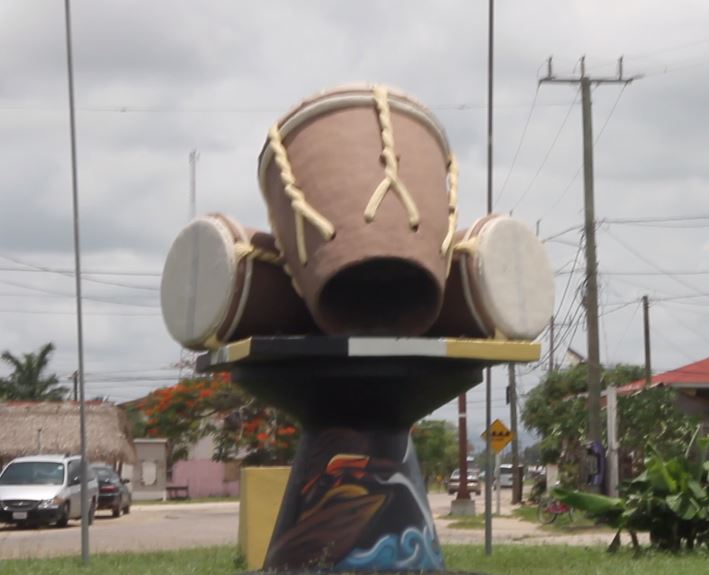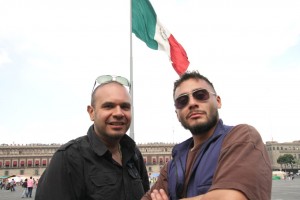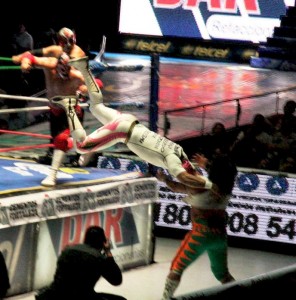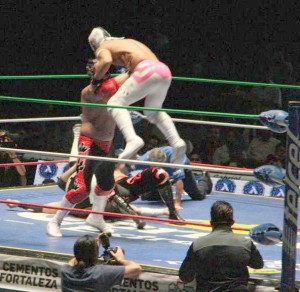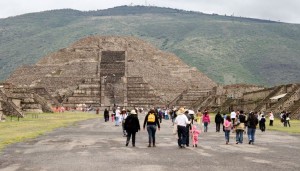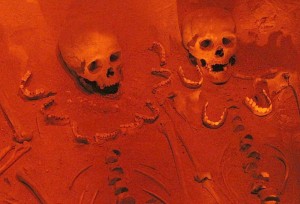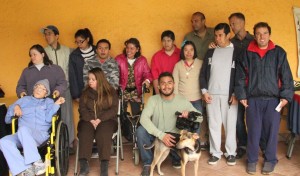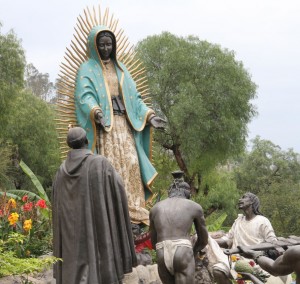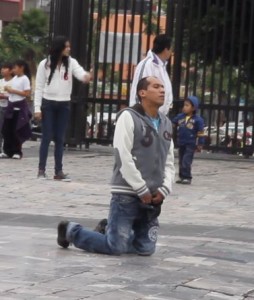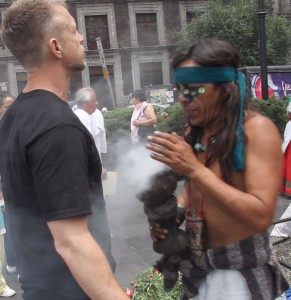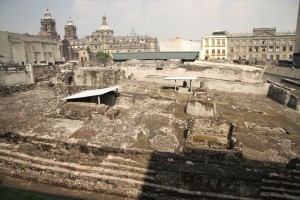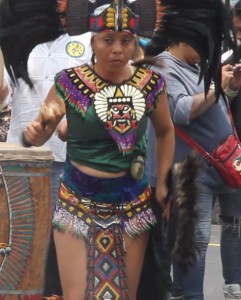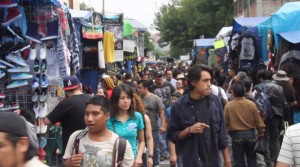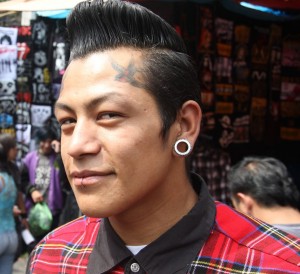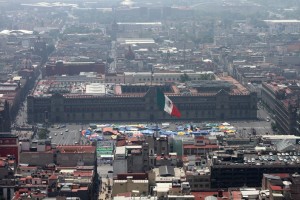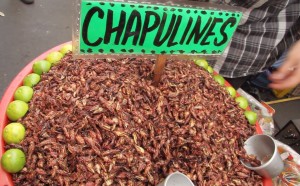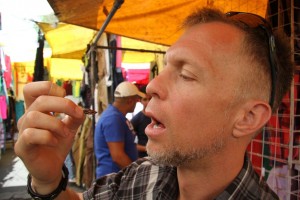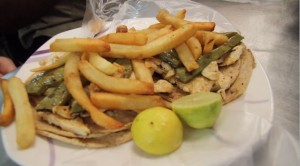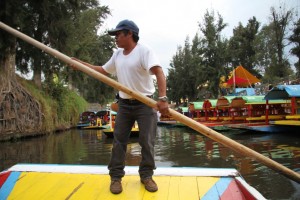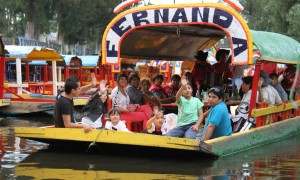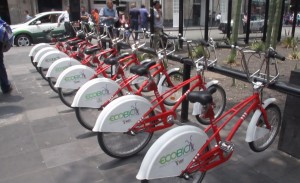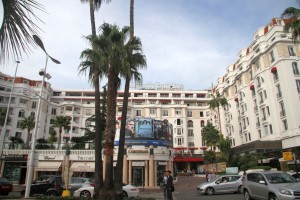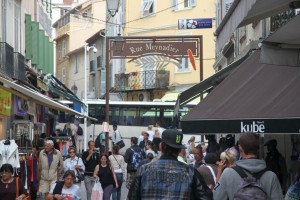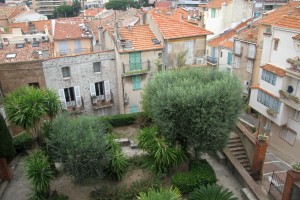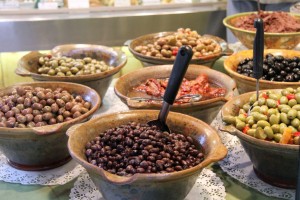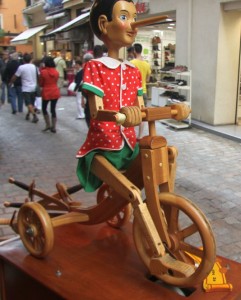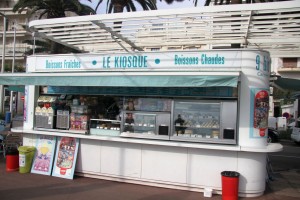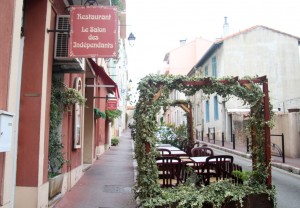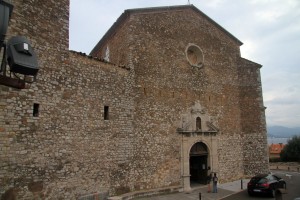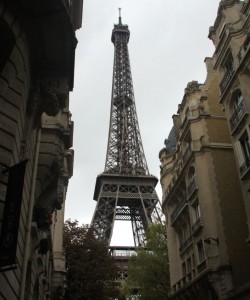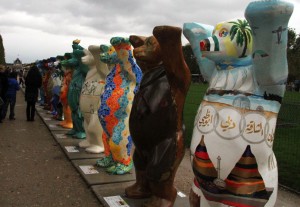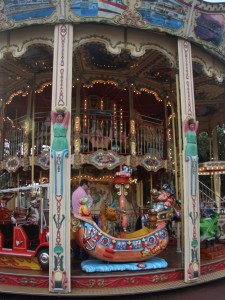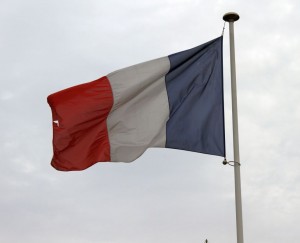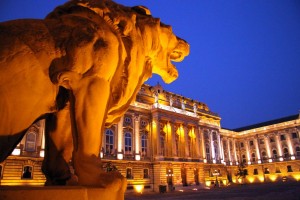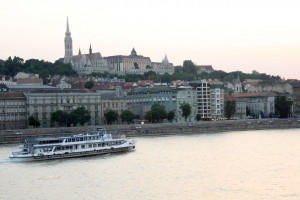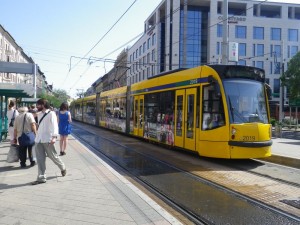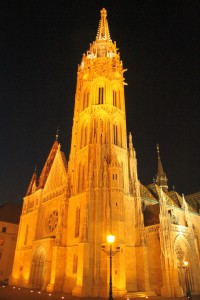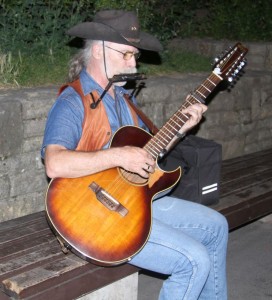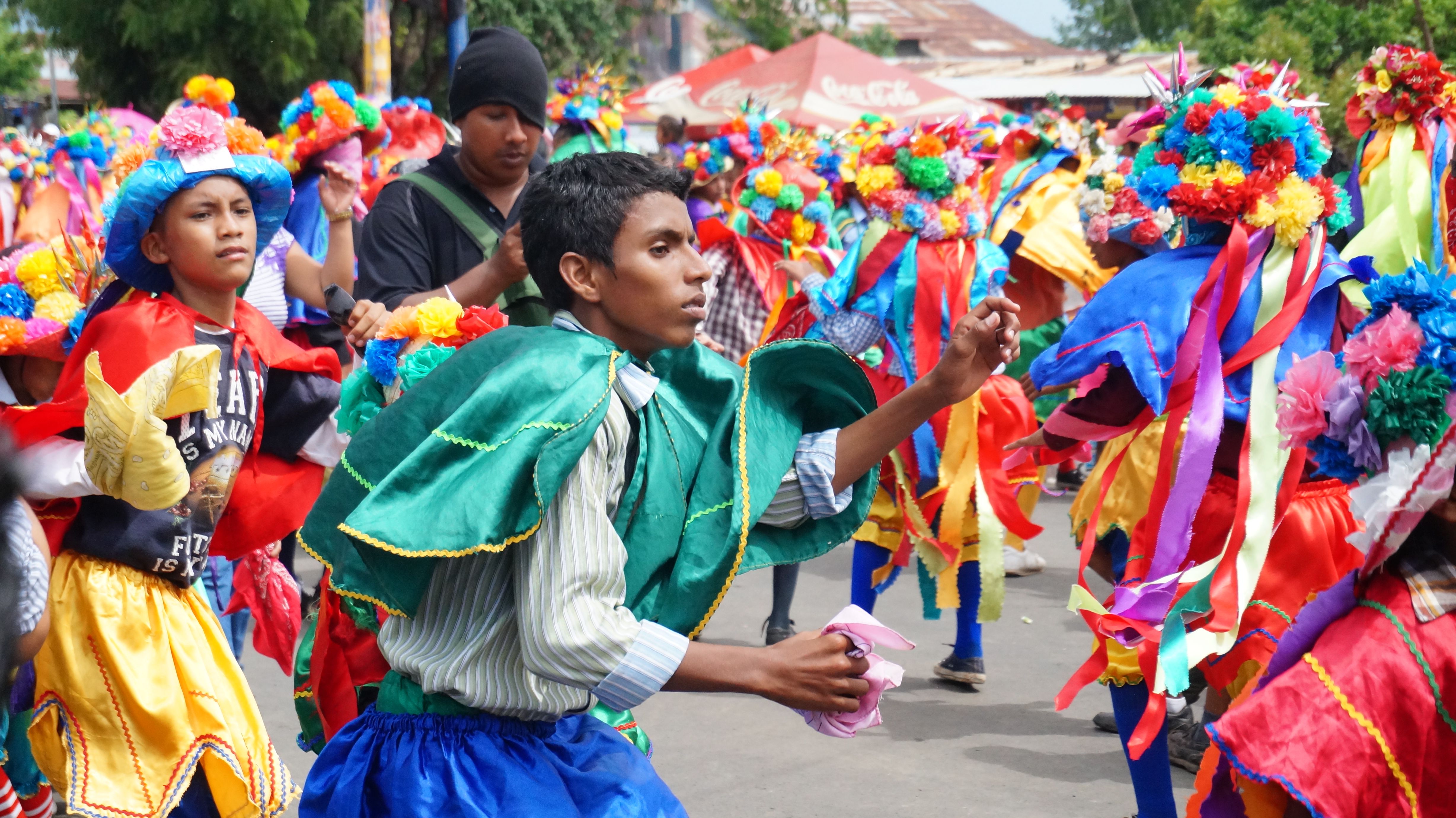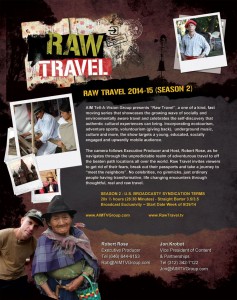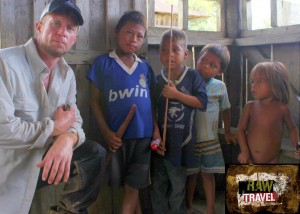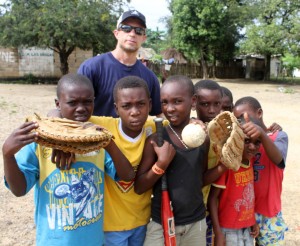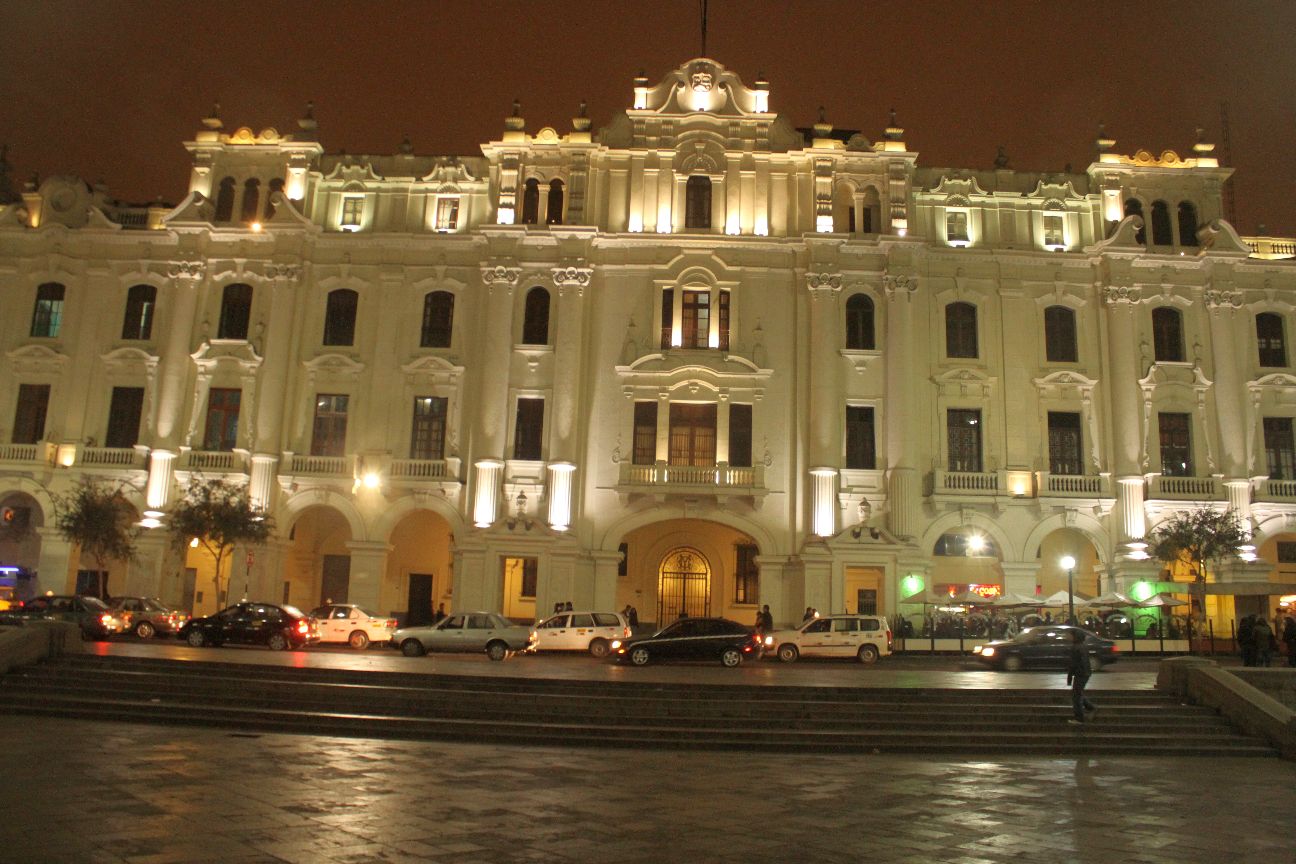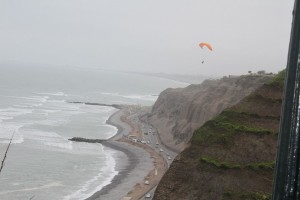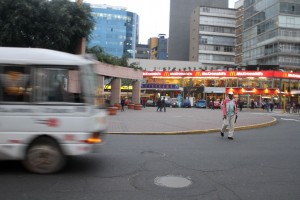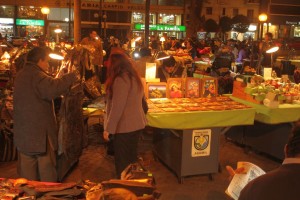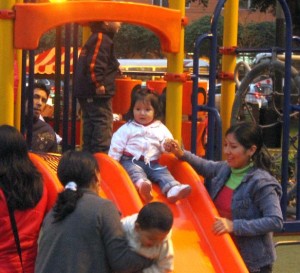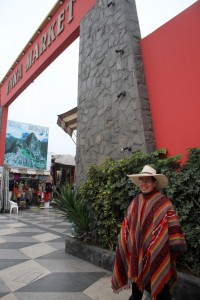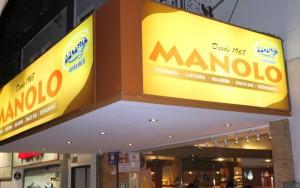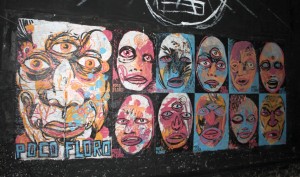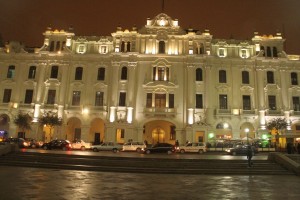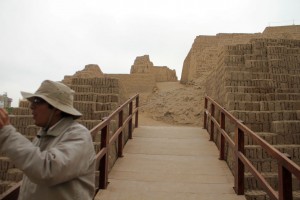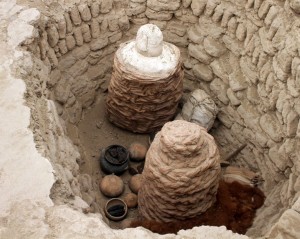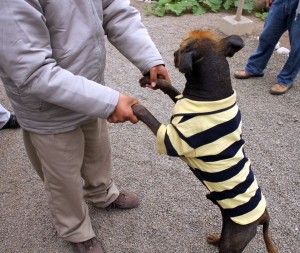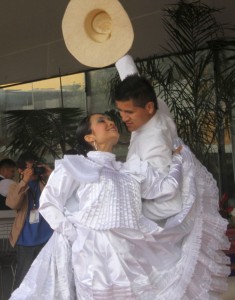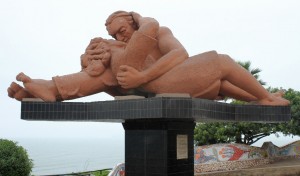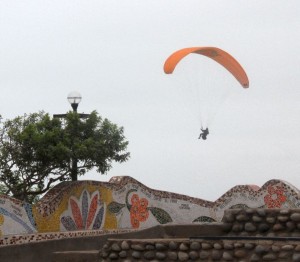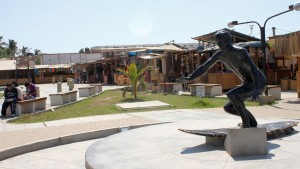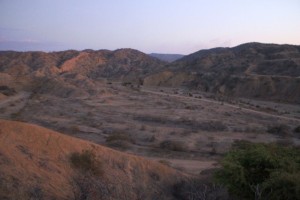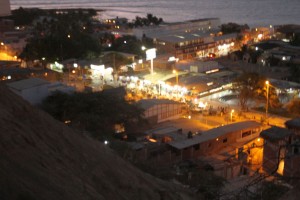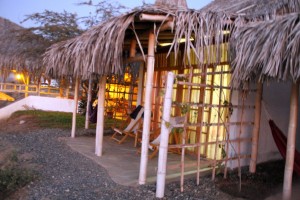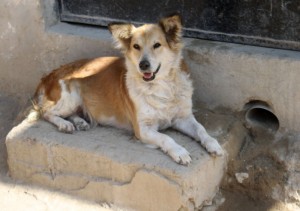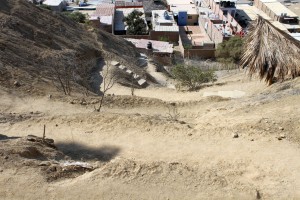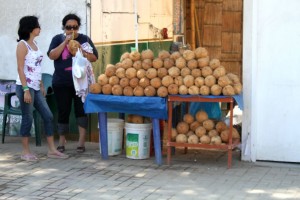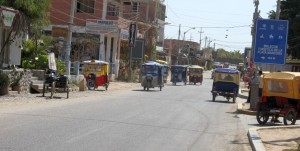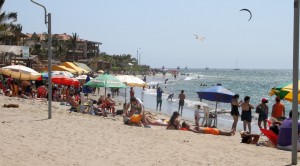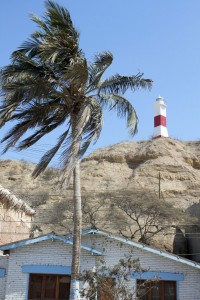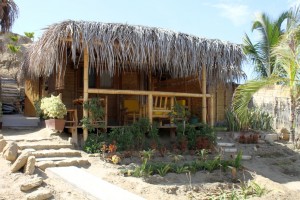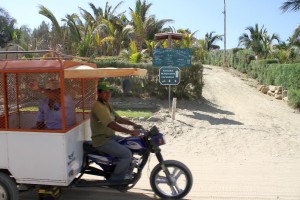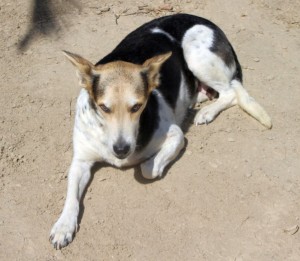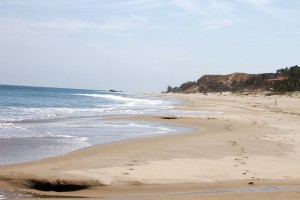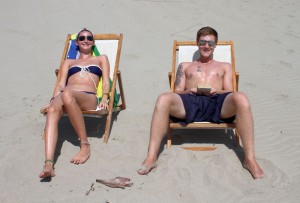For our Belize shoot we decided upon a slightly different strategy. Belize is small so our rough plan was to bus from Playa del Carmen, Mexico, enter the country via the Mexico / Belize border in the north and bus all the way down South before heading to Guatemala by boat from Punta Gorda. We decided to have as loose of an agenda as possible to allow for things to happen serendipitously.
My personal expectations for Belize were shaped almost solely by tourism brochures, magazine and TV ads, so perhaps I shouldn’t have been surprised at the poverty so apparent in Belize (we were told that over 40% of Belize’s residents have incomes of below $1,500 per year).
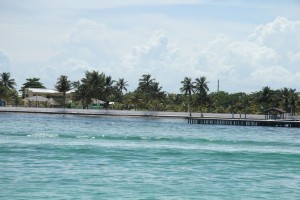
But against this very 3rd world backdrop with little infrastructure, what surprised me most were the high prices relative to the rest of Central America. Belize is the most expensive destination in Central America and one of the most expensive I’ve ever visited in all of Latin America (Chile or Argentina perhaps are exceptions). The reefs, beaches, rainforests and landscape are all indeed beautiful, but the infrastructure is still very third world in most places. The roads are a mess in places like Dangriga and even Belize City which has a dangerous reputation and sub-par hotels there command well over $150 U.S. per night and a rental car is $100+ a day.
Something just does not add up. Yet Americans flock here. I have a hunch it is because they are able to speak English or they, like me, saw the slick tourism brochures and were swayed.
THE NORTH – LAMANAI RUINS
We began our journey at Orange Walk in the northern part of the country arriving by bus from Playa at a surreal 5:30AM. We promptly made our way to the St. Christopher Hotel and proceeded to nap like the dead a couple of hours.
Upon waking, we skipped breakfast and split into teams to make the most of the day. Renzo (Director/Editor) & I (Ex. Producer / Host) headed up river for a river tour of Monkey Island and the incredible Lamanai Ruins while Moses (Camera / Editor) stayed in town to shoot B-roll of the town of Orange Walk.
Except for our local guide, the boat was full of Americans including a nice, young couple from Los Angeles, two college guys from the University of Oregon (Go Ducks!) that we ended up interviewing and another older couple from Odessa, TX.

On the way up the river our boat stopped at an island to feed the ONE resident monkey who survived the last big hurricane and then made our way to the Lamanai Ruins which are truly amazing. Appropriately enough the elusive jaguar’s roar could be heard reverberated through the jungle just as we began touring the site. Now THAT was cool… and surreal.
Our guide was first rate and he filled us in on the fascinating history of the Maya in Belize. I climbed the very, very steep pyramid for an amazing view and I thought to myself “this is why people come to Belize”. It was so remote. With a population of just 300,000 you feel as if you have the place to yourself.
Other than proximity to the ruins, Orange Walk doesn’t have much to offer other than hospitality so we bolted the next day and headed to Belize City where we promptly caught a ferry to Caye Ambergis and the town of San Pedro, an extremely touristy and, if you ask me, overpriced and over trafficked island that does at least provide access to world class scuba diving and snorkeling. I’m not scuba certified but I did take part in some snorkeling and it was some of the best snorkeling sites I’ve ever seen. There was so much coral and fish that even though I was having a tough time navigating with the underwater camera (I had to forget my pride and ask for a life jacket) I still couldn’t help but get some amazing shots.
The big draw are giant stingrays and “toothless” brown sharks that gather in swarms. You can get up close and personal with both stingrays and sharks, who aren’t actually toothless but have their teeth so far back in their throat as to be mostly harmless to humans.
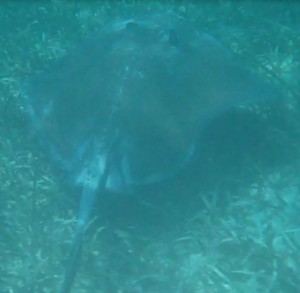
Snorkelers were once allowed to pet the sharks but apparently not anymore. I was definitely within touching distance to a huge swarm that gathered to eat the chum thrown out by our boat captain and I’d love to say I captured some incredible footage with our underwater camera but alas, the thing malfunctioned and my attempts to fix it in water resulted in a fogging up of the lens at that very moment. Had it not been for the life jacket I would have definitely drowned messing with the damned thing (One Go Pro is now on its way to us as a result).
I did capture some good shots of the sharks feeding frenzy from the surface and some quick shots in water finally. Nearby Blue Hole reef is pretty incredible I hear but since it would have been $300 to find out, we passed.
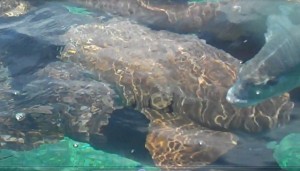
While in San Pedro we stayed at “Pedro’s” hotel which was nice enough for our standards (which are pretty low at this point) but the blatant angling for a big tip at check out (apparently in exchange for giving us advice and letting us use the phone) by the ex-patriot desk clerk was distasteful. With so many poor Belizians suffering this guy from the developed world wants me to spend my hard earned money on what is essentially a beach bum from the U.S. or U.K. (Couldn’t tell). Am I in South Beach?
I hear that If you want to save some $ and have a more laid back experience then nearby Caye Walker is the spot and I wish we’d skipped San Pedro and tried Caye Caulker first.
We quickly realized Belize was not going to be a budget buster. So what’s a production crew producing an authentic travel show on a semi-tight budget to do? We gritted our teeth and tried and show the real Belize, warts and all. But that also includes showcasing the incredible and I do mean incredible natural beauty and incredible and I do mean incredibly nice people.
But first we went from frying pan to fire when we escaped San Pedro for Belize City by boat. We rented a car so we could get around ($100) and secured a relatively inexpensive (by Belizian standards at least) hotel on the outskirts of town. Our plan was to hit the Belize Zoo and then the Baboon (Howler Monkey) Sanctuary the next day.
Belize Zoo, is a poorly marketed travel destination (no signage, a recently disconnected phone number and they apparently don’t return email inquiries to the press) halfway between Belize City and the capital city of Belmopan. We don’t do zoos normally but this one reportedly works with conserving endangered animals native to Belize and we thought it might be a good fit for the show. However, when we arrived they demanded a fee in exchange for shooting. It is against my policy of giving worldwide, free publicity and paying for the privilege to do so. I didn’t even find out all how much they wanted as we hastily made our way to more enticing finds. Tip to the Belize Zoo.. Get a phone #, return your emails, put up some signage and say “yes” to publicity and your attendance will most likely rise.
Not too far down the road from the zoo is a remarkable story, the Community Baboon Reserve (Howler Monkey Sanctuary… but the local’s call them “Baboons”). The work this organization has accomplished since the 1970s is simply amazing. They are the perfect example of tourism working hand in hand with ecology while helping locals develop sustainable tourism income.

Since the reserve came on the scene in the 1970’s the Howler monkey population in Belize has recovered from less than 800 to over 8,000 today. The reserve is run by a community board of female leaders from nearby villages and many of the locals make their living at the reserve serving as tour guides and workers. The reserve is technically several locally owned farms where the land owners pledged to farm in a way that will insure the Howler Monkey’s continued survival (i.e. when clearing land, keeping rows of tall trees in tact so the monkeys have a “highway” to get from place to place). The Howler Monkey is not a pest to crops so farmers and best I can tell pretty much everyone wants to keep them around.
And why not, the monkeys are adorable. It was incredibly entertaining to go to the Howler Monkey’s habitat and visit them and get them to howl. Our guide (also named Robert) is a local and has been guiding visitors for over a decade. He showed me how to call and get the alpha male to howl back. Howler males rarely resort to physical violence, instead they have a “howl off” with the loser graciously heading to another pack. I couldn’t help but think that humans could learn something from this technique?
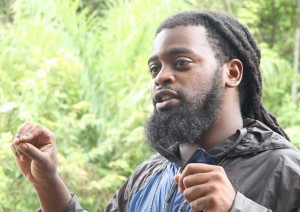
When leaving the sanctuary, be sure to stop by Ecolution and speak to our buddy Shane and his family about their participation in preserving the Howler Monkeys. Ecolution is independently owned and operated and Shane is trying to grow it little by little by utilizing everything he learned in the U.S. when attending college. Ecolution has some cool howler monkeys on site as well as some handmade artisan crafts and Shane is slowly but surely putting a hotel and restaurant together. You can find Ecolution when heading back to Belize City on the way from the Howler Sanctuary and you can’t miss the “This is it!” signs and Shane’s brother working to pull passing cars over. Don’t be afraid and don’t miss out on these guys’ infections energy and attitude. In my opinion, Belize could use more independent tourism entrepreneurs like Shane.
DANGRIGA AND THE SOUTH
Despite trying to find SOME redeeming quality, we couldn’t and as mentioned, Belize City has little to offer travelers other than sparse or overpriced accommodations, food and reportedly some serious danger, so we made our way to Dangriga which, is a sizable (for Belize) but isolated village suffering from lack of decent roads and infrastructure but full of incredibly hospitable and nice people.
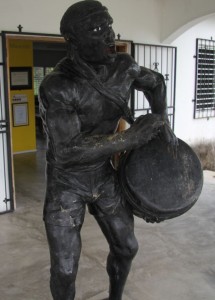
Most are of Garifuna descent so we paid a visit to the Garifuna Museum to learn more about their culture which extends from the Caribbean all the way into pockets in Guatemala and Honduras. Garifunas are very different from Creole (they were never slaves and are a mixture of indigenous and African) and have a fascinating story and distinct culture and language.
In Daringa we serendipitously ran into Geoffrey Dillon, an educator from the University of San Francisco and founder of Project Learn Belize, a non-profit organization helping Dangriga’s impoverished young students. Like much of Central America, high school in Belize requires a tuition of approximately $500 yearly plus supplies and many, many families struggle to meet this costs.
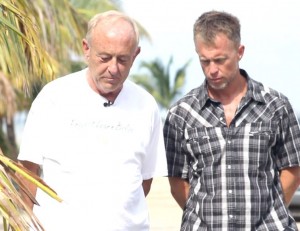
In addition to bringing volunteer teachers and nurses from the U.S., Geoffrey also brings in school supplies (he has to sneak them in because the Belize government has their hand out for “duties” valuing things like old computers as “new”) and other vital resources. Project Learn Belize is also beginning to offer paid scholarships to promising students as well. After just a few minutes of chatting with Geoffrey it was clear his heart was in the right place and that he was doing all he could to help Belizian youth despite the many obstacles. Geoff’s story was so inspiring we decided to do an impromptu feature on Project Learn Belize. Learn more about Project Learn Belize and how you can help HERE.
Before checking out of Dangriga we checked in on local drum making legend, Austin Rodriguez who creates authentic, one of a kind Garifuna drums using a chainsaw. Mr. Rodriguez has been featured on CNN and his daughter is also in on the craft as well. Mr. Rodriguez’s fee for allowing us to shoot? A bottle of water. The Belizian Zoo could learn a thing or two from Mr. Rodriguez.
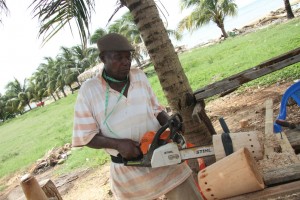
After Dangriga we made our way down to a place that has a bit more infrastructure and thus tourists, Placencia, a small lovely beach town in Southern Belize that I have to say was my favorite of all the Belizian destinations. The bus ride from Dangriga to Placencia provided further evidence that Southern Belize is where much of the beauty of this small country lies with lush rainforests, big mountains and valleys on each side of the bus.
Before entering town I was surprised by the large houses, McMansions really, nestled on the outskirts of town. It was such a contrasting picture of Belize to what we had been witnessing where most people live in tin shacks or half-finished homes. Where is that $ coming from? More importantly, where is it going?
Once inside Placencia, it’s a little more humble and like a really nice beach village. There are plenty of accommodations right on the beach and the sidewalk that runs through town somewhat guides the travelers to the very friendly and very eager to help locals, creating an interesting and cool relationship between travelers and locals.
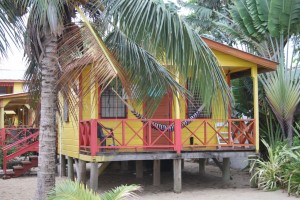
We had no hotel reservations and a lovely local Belizian family gave us the 411 on where to stay, where to eat, etc. right away. Placencia is one of those spots I wished we had been able to spend a bit more time.
But we had a date in Punta Gorda for one of the few planned events on our agenda and that was working with the fine folks from Sustainable Harvest International. Sustainable Harvest has locations in several Central American countries and their main goal is to work with impoverished, independent farmers on developing sustainable agriculture methods for improved yield and an improved environment.
We took a short boat ride from Placencia to Independence where Nana and Estevan from SHI picked us up in their donated 4WD pickup truck. We’d need a 4wd as we made our way to tour some of the SHI assisted farms. I was the only idiot to show up in shorts and I hadn’t put on mosquito repellent so within 15 minutes my legs were a decimated, mosquito ravaged mess. I quickly got the message and changed into some jeans right in the back of the pickup truck in between shoots, but it was too late. My legs were toasts and I’d need a good week to recover as my ankles swelled so large I could hardly put on my sneakers.
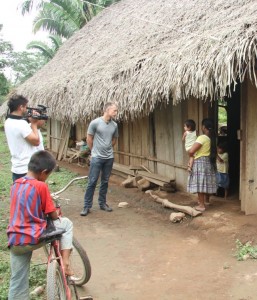
But the eventual pain was worth it. We toured small community farms in the area surrounded by big corporate banana and fruit plantations. SHI works with local farmers to get away from the mono-culture (one crop) that plagues the big corporate farms. Thanks to SHI, local farmers now grow a wider variety of crops from corn to pineapples and as a result have more dependable year round income streams and are less at risk when the inevitable bad weather strikes.
SHI also shows farmers how they can use all natural fertilizer (chicken and even human waste, nothing goes to waste) and all natural insecticides (Yes, as the Maya knew, they have existed for centuries), and are working to move farmers from “Slash & Burn” to “Slash and Mulch” culture.
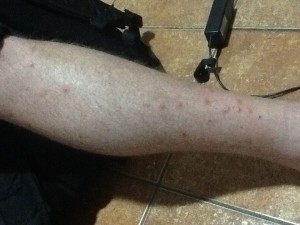
I grew up on a farm but am now a full-fledged city boy (as evidenced by my mosquito ravaged legs) but I must tell you I found the work SHI is doing fascinating. It was way more information than my pea brained citiefied brain could absorb at times (good thing cameras rolled), but I was able to see 1st hand the work SHI does and the difference it is making in the lives of local Belizian families like the farms we saw of Francis and Leticia. SHI Belize has a large, dedicated staff and they work with almost 300 impacting thousands of Belizians. Working with SHI was a highlight of the trip. Thanks guys!
You may wonder after reading this post if I enjoyed Belize. I have friends that swear by Belize. At first, I couldn’t see the attraction and the distraction of all those tourism dollars seeming to evaporate in thin air is off putting. The Belizian government in their infinite wisdom charged $250 for the privilege of covering their country and that too was off putting. The Belizian Zoo demanded a shooting fee and yes, that was off putting as well, and when I compare Belize to that of neighboring Guatemala, as you’ll see when I discuss Guatemala next, it’s a HUGE difference.
So love it or hate it or somewhere in between well, I won’t say just yet. I need some space, some time to consider things. But when it comes to the Belizian people, then that is a no brainer. It’s nothing but L-O-V-E, respect and admiration.
Next up! Guatemala. Stay tuned.

